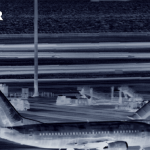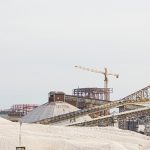ENOVA award for HGH
ENOVA Award
HGH awarded with innovation prize, in the productivity and profitability category, at ENOVA Award exhibition, for CoolSpeed system.
HGH’s CoolSpeed technology is the winner of ENOVA award for innovation, for the ergonomics of use it brings to high temperature cavity blackbodies, reference sources used in R & D and production of infrared sensors.
Cavity blackbody sources are well known for their high optical performances: emissivity higher than 99% on full spectrum, wide temperature range, excellent temporal stability, fast rising time. HGH’s RCN cavity blackbodies feature all these benefits. But every user knows the induced compromises: a cooling time of several hours, forcing to perform calibrations of infrared sensors only by increasing temperatures.
Thanks to the CoolSpeed Technology, which cuts the cooling time of RCN cavity Blackbodies in half, it is no longer necessary to choose between performance and flexibility of use.
This prize rewards two major core values of HGH: first, our constant search for innovations to improve our product lines, and also our commitment to our customers: this project was directly influenced by our client’s expectations and from our understanding the constraints in using high temperature reference sources.
CoolSpeed was also presented at the SPIE Defense, Security & Sensing conference.
Infratest LT – Blackbody control and management software
For 30 years, HGH has designed and manufactured infrared reference sources, called blackbodies, for all applications of infrared sensor characterization. The range includes: low temperature extended area blackbodies, differential and absolute infrared reference sources, high temperature extended area blackbodies and cavity blackbodies with extended temperature range.
Each of these blackbodies is equipped with the new blackbody management software INFRATEST LT.
Connected to the network via Ethernet, serial, or parallel link, Infratest LT automatically detects all blackbodies on the network and is able to simultaneously display all data from several blackbodies, whatever the model. User-friendly, Infratest-LT allows the user to send a set-point, enabling one to read the temperature values in real-time and determine if the source is stabilized. All temperature data can easily be exported. It is also a secure tool for configuring blackbodies, and it contributes to expand the source lifetime, with a clear management of calibration cycles.
As a reminder, all HGH’s blackbodies are provided with a certificate of radiometric calibration, linked to the global primary standards. Thanks to the high stability of the components used for the manufacturing of HGH’s blackbodies, these infrared sources can be used as optical metrology references, and their calibration certificate are valid for 2 years.
HGH – Thales Optronique : 15 years of successful collaboration
In 1999, Thales Optronique, then looking for ergonomic benches to do the maintenance of the portable camera Sophie, chose to work with HGH, recognized specialist in infrared camera test systems. A new product range was born from this collaboration between technical experts: the IRCOL collimators, test benches for infrared cameras and multispectral sensors (Visible sensors, Light Intensifiers, laser rangefinders). IRCOL range have been developed since then, but the collaboration with Thales has never wavered and has even been strengthened with a new maintenance project for Catherine FC cameras. As Isabelle Gonnaud, Optronics Purchasing Manager at Thales, notes: “HGH has taken an important responsibility in the value chain by becoming a supplier of complete industrial test benches.”
Today, the IRCOL family of test benches includes a wide range of compact and easy to use collimators, equipped with standard or specific targets with high emissivity, illuminated by absolute and differential low temperature blackbodies DCN1000, or cavity blackbodies RCN, or visible or low light sources. All these systems are fully managed by the Infratest software, which can also acquire video signals from the camera under test. Infratest analyzes and measures an exhaustive list of parameters, including: temporal noise, fixed pattern noise, NETD, MTF, MRTD, distortion, but also resolution test on visible or low light level cameras, and also the alignment test between the mechanical and optical axes, and the laser rangefinder emitter.


